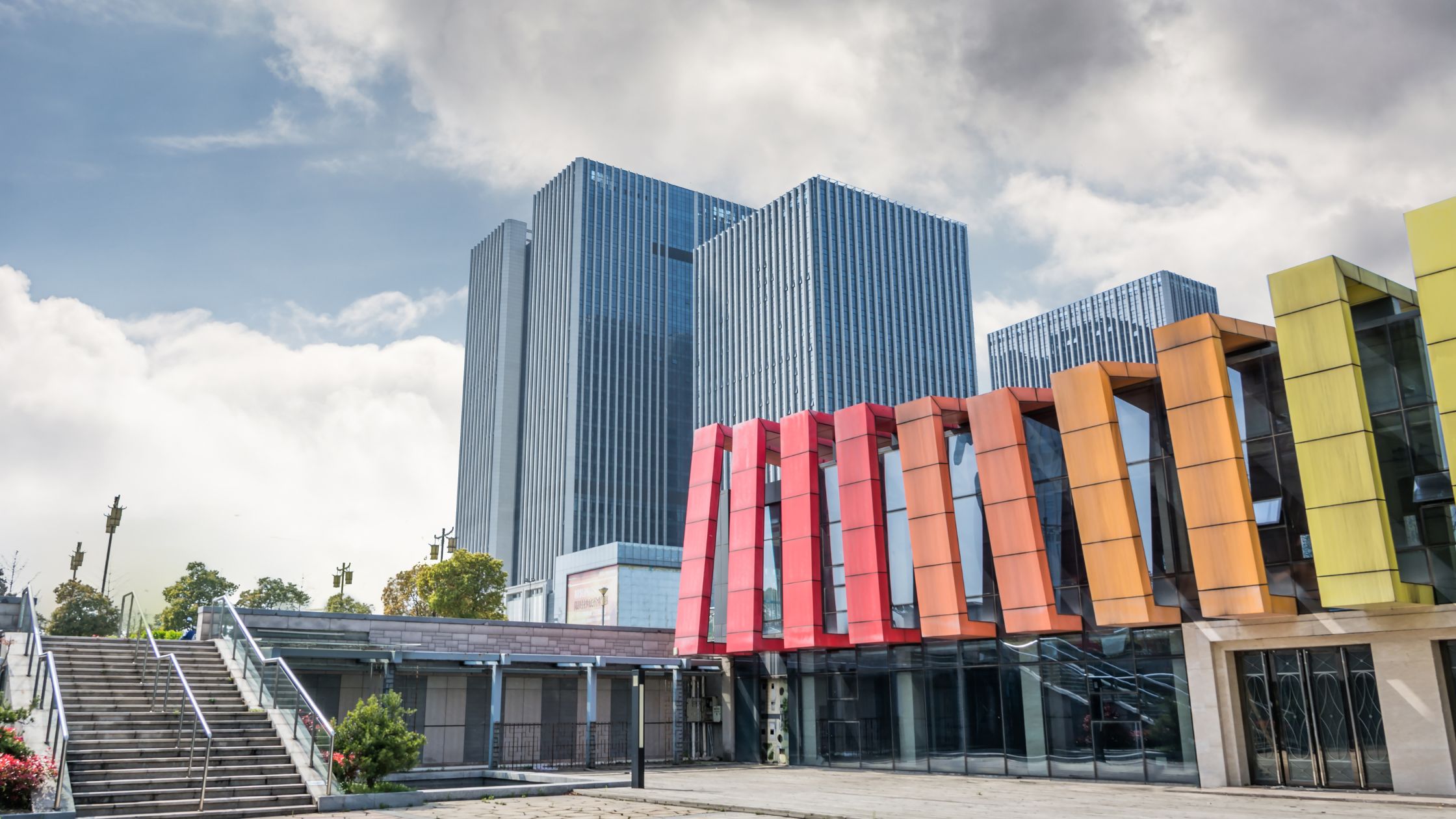It’s probably not an overstatement to say that location is everything in CRE. More than the size or the condition of your building, “where” your commercial property is located is what will drive investment returns. You need to focus on strategic locations that offer the best opportunities for long-term success to maximize your CRE portfolio’s potential.
In this blog, we will share the importance of location when finding commercial real estate opportunities in key CRE markets including Illinois, Massachusetts, Florida, Arizona, Colorado, and Texas.
Why location matters in commercial real estate
The following factors demonstrate just how critical a role location plays in commercial real estate investment decisions:
1. Target market and demographics
Location significantly influences an area’s demographic makeup. Potential CRE tenants want to be situated in an area with a suitable demographic profile so they can connect with their target market and thrive more effectively. Before buying a commercial property, it’s important to know what kind of businesses would thrive there. For instance, a high-end retail store has a better chance of flourishing in an affluent Miami neighborhood because it aligns with the residents’ spending capabilities.
2. Visibility and accessibility
A building in a prime CRE location is more accessible and visible. Properties within easy reach of major transportation hubs, routes, and public transport are attractive to more customers and tenants. Likewise, properties near landmarks and visible from bustling streets can have higher values.
3. Business synergies and ecosystems
A commercial property’s success potential is heavily influenced by the business ecosystem around it. Being in an area that encourages synergies with complementary industries or businesses fosters a mutually advantageous environment.
CRE properties in the Chicago Loop (near LaSalle Street) benefit from this clustering effect. Similar companies feed off one another’s presence, mutually benefiting each other. The growing tech hub in Denver, CO is another great example. More than 24,000 tech-related businesses are now based here, with 17,500 (73%) of them in the Denver metro area. Tapping into growing opportunities now could allow you to lock in a better price in commercial real estate.
4. Market saturation and competition
While analyzing a potential location, take the time to understand the market’s current saturation and level of competition. Oversaturated areas with too many businesses similar to each other may repel tenants because the competition is too fierce and profit margins tend to be slim. In some cases, selecting a less crowded but prosperous area can be a good move — a CRE building in a location with fewer competitors could be a better investment.
5. Zoning and local regulations
Zoning laws and local regulations dictate how a CRE property can be used, building restrictions, and compliance requirements. These regulations can have a huge impact on your investment, so make sure to choose locations that match your goals. Take the time to understand the zoning laws in the area you’re interested in to avoid potential legal pitfalls and protect your investment.
6. Development plans
Long-term development plans in an area can significantly impact your CRE investment returns and the value of your building. It’s smart to check out areas that are set for future projects, like urban renewal or new infrastructure. These developments usually bring in more people and businesses, which can drive up property values.
Understanding location dynamics
Tier 1 CRE cities like Miami, Dallas, Boston, Denver, Phoenix, and Houston exemplify the significant impact of location on commercial real estate.
Diversity of commercial properties
Because these gateway cities mentioned have a mix of different industries, large sizes, and unique cultures, they offer a wide variety of CRE investment opportunities in different neighborhoods and districts. This diversity lets you choose properties that match your specific goals and the kind of tenants you want to attract.
Many areas in these locations are well-known economic growth hotspots. Take the Tampa-St. Petersburg-Clearwater area in Florida, for example. CRE analysts agree that this MSA offers opportunities for long-term growth, particularly for tech industries. For instance, St. Petersburg’s continuous growth, laid-back quality of life, and talented workforce make it a favorable hub for CRE, particularly for companies looking to expand or relocate.
How to choose the best location for commercial real estate
Be sure to do the following when evaluating a CRE location:
Market research
- Analyze the current and projected economic health of the area.
- Assess the level of competition from existing businesses.
- Understand the needs and preferences of potential customers.
Risk assessment
- Identify potential risks like natural disasters or pollution.
- Evaluate the area’s susceptibility to economic downturns.
- Anticipate shifts in consumer behavior that may impact the property’s value.
Long-term vision
- Consider how future economic trends may affect the location.
- Evaluate the impact of planned infrastructure projects and zoning changes.
Strategic locations for commercial real estate
In this section, we’ll highlight key locations with a proven track record of CRE success.
Dallas, TX
Dallas, TX, is a major region for CRE investors because of its robust job market and thriving economy. According to the 2024 US Investor Intentions Survey by CBRE Research, Dallas-Fort Worth has been a top choice for real estate investment for three consecutive years. CRE investors have shown a strong preference for Class A multifamily properties, industrial and logistics, grocery-anchored shopping centers, and high-quality trophy office properties, especially those located along West Seventh Street and in the Cultural District.
Houston, TX
Houston offers a dynamic commercial real estate market — from small-scale buildings to large-scale commercial spaces. Here are some interesting CRE locations you may want to look at:
- Houston Metro Area
- Spring (located just north of Houston, within a convenient distance of the downtown area)
- Katy (a rapidly growing city west of Houston)
- Atascocita (offers unique opportunities to tap into the northeastern region of Houston)
- Galena Park (for industrial CRE)
Denver, CO
Denver’s commercial real estate market may have been slow in the first quarter of 2024 due to remote work policies, high interest rates, and economic uncertainties. Factors like stricter lending rules and aging office buildings also contributed to the decline. Despite these challenges, there are still promising opportunities in retail, industrial, and multi-family.
Florida
The Sunshine State’s attractive tax benefits and stunning beaches make it attractive for families, young professionals, retirees, and businesses. This influx of people has fueled growth in Florida’s CRE market. Miami in particular has seen strong performance in its office market, outpacing national averages.
However, the current economic climate characterized by high inflation, interest rates, and insurance costs has led lenders to adopt a more cautious approach to CRE lending in the region. To thrive in this market, consider aligning your CRE projects with initiatives like the Live Local Act. Focusing on affordable housing can help you tap into tax credits and funding opportunities available in the segment.
You might also reconsider repurposing existing properties through condo redevelopments to overcome stringent regulations and high maintenance costs. This approach lets you contribute to the region’s goal of building more efficient and sustainable housing solutions while maximizing your return on investment.
Miami, FL
Miami’s strategic location on the Atlantic coast and its proximity to South and Central America have made it a lucrative CRE market. This geographic advantage has solidified the city’s position as a global transportation hub.
Recognizing Miami’s potential, HFF Securities ranked the city 11th among the top US Commercial Real Estate Investment Markets, assigning it a strong investment score of 3.5. This ranking highlights Miami’s attractive investment opportunities and its ability to generate significant returns for CRE investors.
Phoenix, AZ
Phoenix is among the hottest CRE markets in the US right now, with its rising population and growing metro area. The influx of new residents and businesses boosted consumer spending and ultimately created more CRE investment opportunities. Plus, the Valley of the Sun offers a business-friendly environment with low taxes and minimal interference from the government. This, coupled with the availability of sprawling submarkets at reasonable costs, makes it an attractive destination for businesses and real estate investors.
A prime example is Buckeye, which has experienced an 80% increase in population in the last 10 years. This location offers numerous CRE development opportunities.
Boston, MA
Boston has four key submarkets driving its growth: Downtown Boston, Cambridge, Seaport District, and Back Bay. Collectively, these submarkets encompass over 96.1 million square feet of laboratory and office space. The low vacancy rate of just 8.8%, rising rental rates, and significant positive absorption give CRE investors plenty of room to capitalize on the growing demand for office space.
The Boston office market is further bolstered by the growth of key industries such as professional and business services, education, life sciences, healthcare, and technology. These industries are driving demand for office space particularly in the aforementioned submarkets.
Illinois
Illinois has a vast inventory of 7,305 CRE properties available for lease or sale, from office spaces in Chicago to expansive industrial facilities and vibrant retail centers throughout the state. Its strong industrial sector — particularly in established submarkets like O’Hare, Western Cook County, and South Chicago — continues to thrive.
The state’s robust transportation infrastructure makes it a solid destination for industrial CRE investments. While economic fluctuations and the pandemic have presented challenges, key areas like downtown Chicago, Fulton Market, and the United Center also continue to experience growth, particularly in the commercial sector.
Are you investing in these locations?
It’s easier to navigate the complex CRE landscape in these locations when you’re partnered with a seasoned private commercial lender like Private Capital Investors. Allow us to share our years of expertise in financing commercial real estate in these stellar markets and help you make informed choices in your investment.
Send us a message at info@privatecapitalinvestors.com or speak with one of our experts by calling 972-865-6206.





